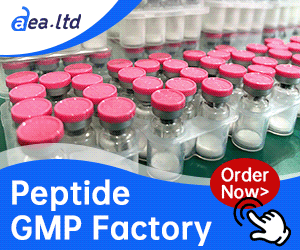- Joined
- Feb 6, 2012
- Messages
- 20,402
- Reaction score
- 18,204
- Points
- 0
Background
Substances that potentially enhance performance (eg, recombinant human erythropoietin [rHuEPO]) are considered doping and are therefore forbidden in sports; however, the scientific evidence behind doping is frequently weak. We aimed to determine the effects of rHuEPO treatment in well trained cyclists on maximal, submaximal, and race performance and on safety, and to present a model clinical study for doping research on other substances.
Methods
We did this double-blind, randomised, placebo-controlled trial at the Centre for Human Drug Research in Leiden (Netherlands). We enrolled healthy, well trained but non-professional male cyclists aged 18–50 years and randomly allocated (1:1) them to receive abdominal subcutaneous injections of rHuEPO (epoetin β; mean dose 6000 IU per week) or placebo (0·9% NaCl) for 8 weeks. Randomisation was stratified by age groups (18–34 years and 35–50 years), with a code generated by a statistician who was not masked to the study. The primary outcome was exercise performance, measured as maximal power output (Pmax), maximal oxygen consumption VO2 max, and gross efficiency in maximal exercise tests with 25 W increments per 5 min, as lactate threshold and ventilatory threshold 1 (VT1) and 2 (VT2) at submaximal levels during the maximal exercise test, and as mean power, VO2, and heart rate in the submaximal exercise tests at the highest mean power output for 45 min in a laboratory setting and in a race to the Mont Ventoux (France) summit, using intention-to-treat analyses. The trial is registered with the Dutch Trial Registry (Nederlands Trial Register), number NTR5643.
Findings
Between March 7, 2016, and April 13, 2016, we randomly assigned 48 participants to the rHuEPO group (n=24) or the placebo group (n=24). Mean haemoglobin concentration (9·6 mmol/L vs 9·0 mmol/L [estimated difference 0·6, 95% CI 0·4 to 0·8]) and maximal power output (351·55 W vs 341·23 W [10·32, 3·47 to 17·17]), and VO2 max (60·121 mL/min per kg vs 57·415 mL/min per kg [2·707, 0·911 to 4·503]) in a maximal exercise test were higher in the rHuEPO group compared with the placebo group. Submaximal exercise test parameters mean power output (283·18 W vs 277·28 W [5·90, −0·87 to 12·67]) and VO2 (50·288 mL/min per kg vs 49·642 mL/min per kg [0·646, −1·307 to 2·600]) at day 46, and Mont Ventoux race times (1 h 40 min 32 s vs 1 h 40 min 15 s [0·3%, −8·3 to 9·6]) did not differ between groups. All adverse events were grade 1–2 and were similar between both groups. No events of grade 3 or worse were observed.
Interpretation
Although rHuEPO treatment improved a laboratory test of maximal exercise, the more clinically relevant submaximal exercise test performance and road race performance were not affected. This study shows that clinical studies with doping substances can be done adequately and safely and are relevant in determining effects of alleged performance-enhancing drugs.
http://www.thelancet.com/journals/lanhae/article/PIIS2352-3026(17)30105-9/fulltext?elsca1=tlpr
Substances that potentially enhance performance (eg, recombinant human erythropoietin [rHuEPO]) are considered doping and are therefore forbidden in sports; however, the scientific evidence behind doping is frequently weak. We aimed to determine the effects of rHuEPO treatment in well trained cyclists on maximal, submaximal, and race performance and on safety, and to present a model clinical study for doping research on other substances.
Methods
We did this double-blind, randomised, placebo-controlled trial at the Centre for Human Drug Research in Leiden (Netherlands). We enrolled healthy, well trained but non-professional male cyclists aged 18–50 years and randomly allocated (1:1) them to receive abdominal subcutaneous injections of rHuEPO (epoetin β; mean dose 6000 IU per week) or placebo (0·9% NaCl) for 8 weeks. Randomisation was stratified by age groups (18–34 years and 35–50 years), with a code generated by a statistician who was not masked to the study. The primary outcome was exercise performance, measured as maximal power output (Pmax), maximal oxygen consumption VO2 max, and gross efficiency in maximal exercise tests with 25 W increments per 5 min, as lactate threshold and ventilatory threshold 1 (VT1) and 2 (VT2) at submaximal levels during the maximal exercise test, and as mean power, VO2, and heart rate in the submaximal exercise tests at the highest mean power output for 45 min in a laboratory setting and in a race to the Mont Ventoux (France) summit, using intention-to-treat analyses. The trial is registered with the Dutch Trial Registry (Nederlands Trial Register), number NTR5643.
Findings
Between March 7, 2016, and April 13, 2016, we randomly assigned 48 participants to the rHuEPO group (n=24) or the placebo group (n=24). Mean haemoglobin concentration (9·6 mmol/L vs 9·0 mmol/L [estimated difference 0·6, 95% CI 0·4 to 0·8]) and maximal power output (351·55 W vs 341·23 W [10·32, 3·47 to 17·17]), and VO2 max (60·121 mL/min per kg vs 57·415 mL/min per kg [2·707, 0·911 to 4·503]) in a maximal exercise test were higher in the rHuEPO group compared with the placebo group. Submaximal exercise test parameters mean power output (283·18 W vs 277·28 W [5·90, −0·87 to 12·67]) and VO2 (50·288 mL/min per kg vs 49·642 mL/min per kg [0·646, −1·307 to 2·600]) at day 46, and Mont Ventoux race times (1 h 40 min 32 s vs 1 h 40 min 15 s [0·3%, −8·3 to 9·6]) did not differ between groups. All adverse events were grade 1–2 and were similar between both groups. No events of grade 3 or worse were observed.
Interpretation
Although rHuEPO treatment improved a laboratory test of maximal exercise, the more clinically relevant submaximal exercise test performance and road race performance were not affected. This study shows that clinical studies with doping substances can be done adequately and safely and are relevant in determining effects of alleged performance-enhancing drugs.
http://www.thelancet.com/journals/lanhae/article/PIIS2352-3026(17)30105-9/fulltext?elsca1=tlpr








